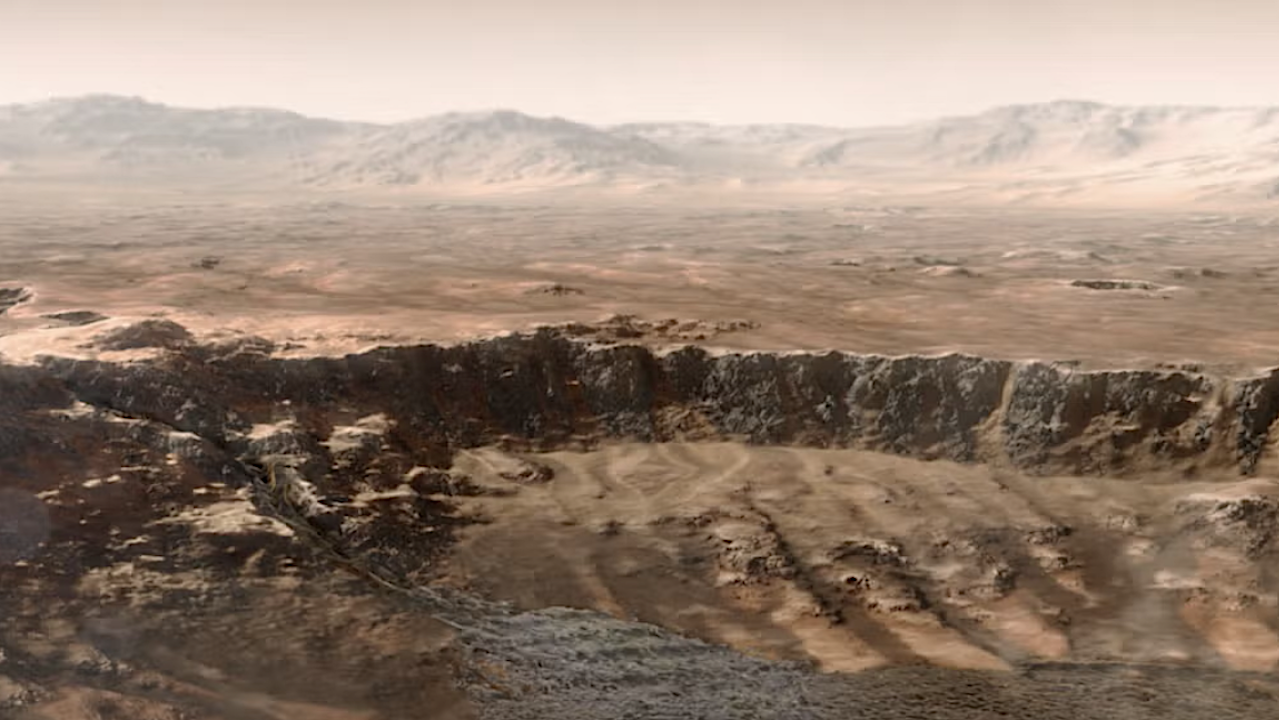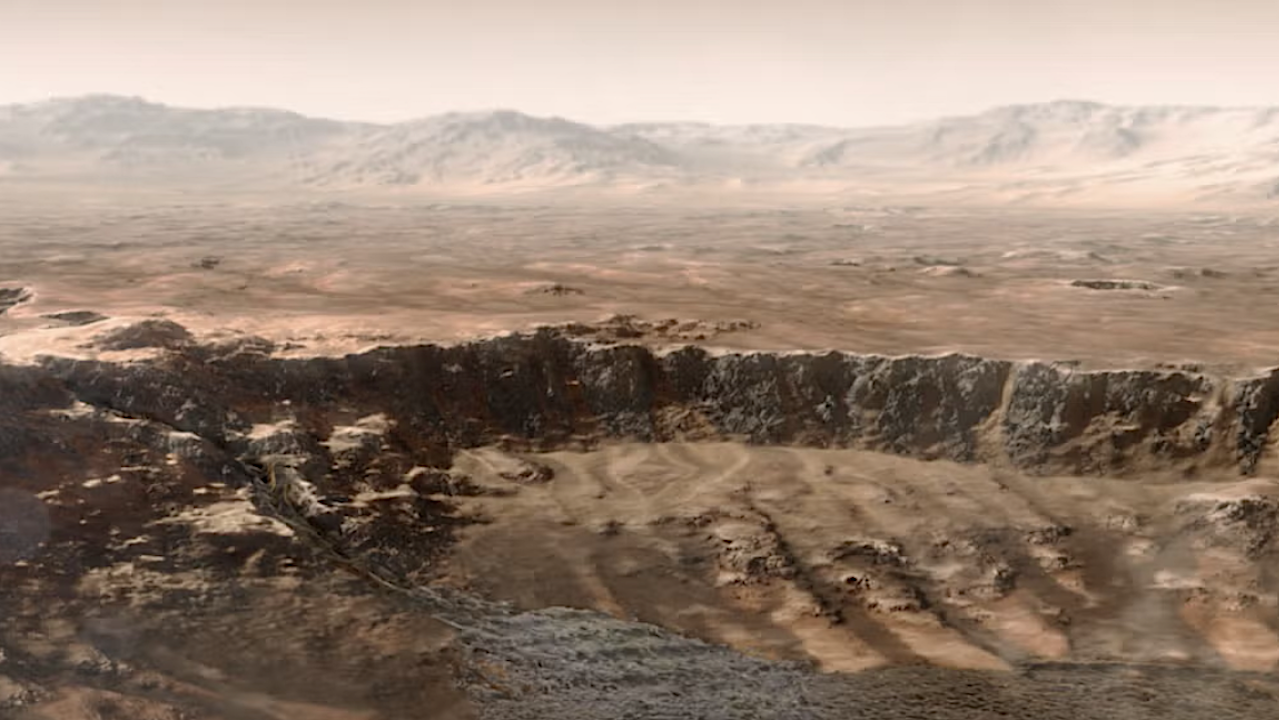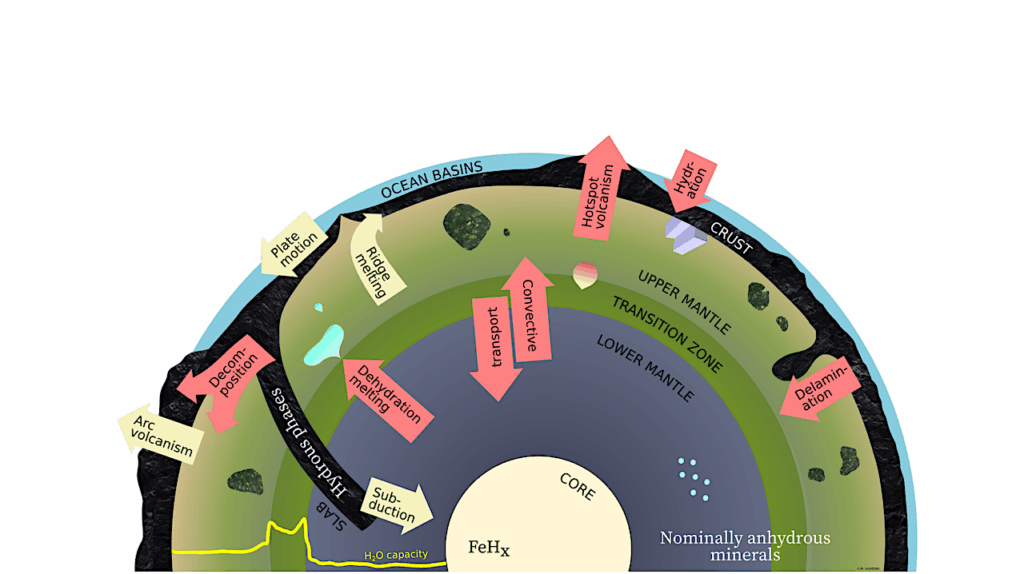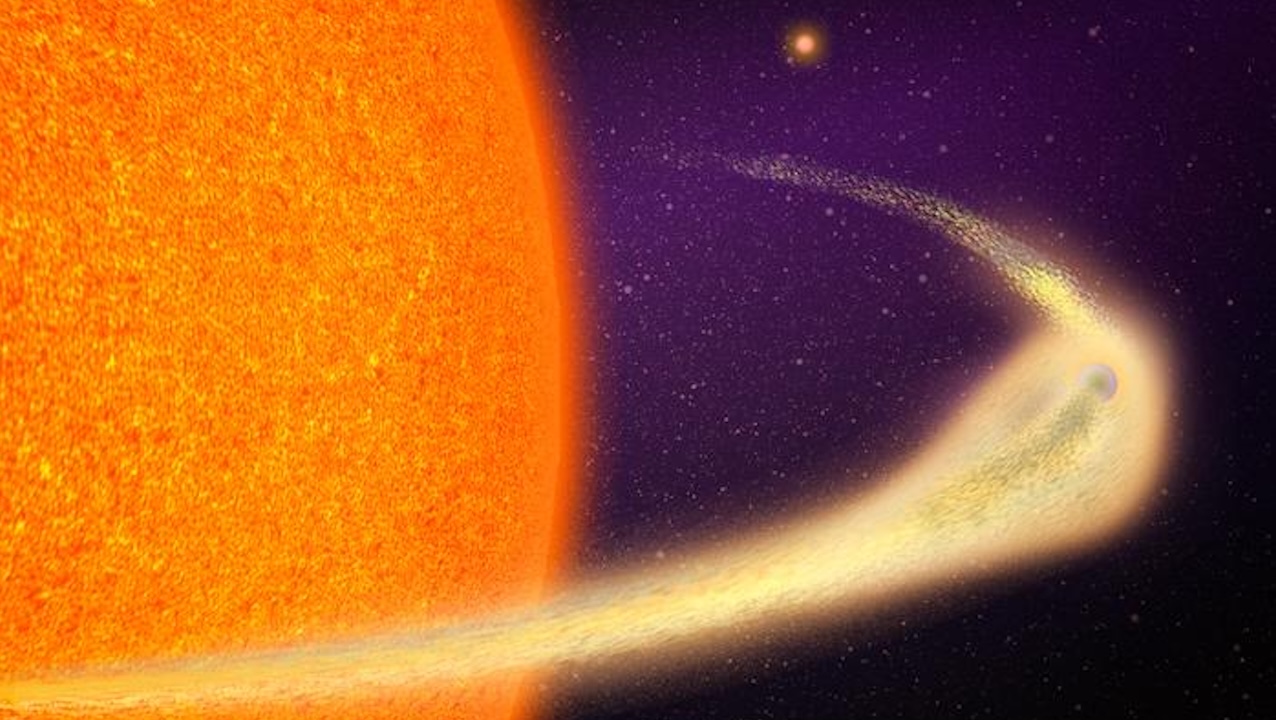Now Reading: Rain And Snow Fell On Ancient Mars
-
01
Rain And Snow Fell On Ancient Mars
Rain And Snow Fell On Ancient Mars


Artist’s depiction of water rushing into Mars’ Jezero Crater, which billions of years ago was the site of a delta. (Credit: NASA/JPL-Caltech)
Visit ancient Mars—a surprisingly temperate planet where snow or rain falls from the sky, and rivers rush down valleys to feed hundreds of lakes.
A new study from geologists at the University of Colorado Boulder paints this picture of a Red Planet that was relatively warm and wet, much different than the frigid wasteland we know today. The team’s findings suggest that heavy precipitation likely fed many networks of valleys and channels that shaped the Martian surface billions of years ago—adding new evidence to a long-running debate in planetary science.
The researchers, led by Amanda Steckel, who earned her doctorate in geological sciences at CU Boulder in 2024, published their findings April 21 in the Journal of Geophysical Research: Planets.
“You could pull up Google Earth images of places like Utah, zoom out, and you’d see the similarities to Mars,” said Steckel, now at the California Institute of Technology.
Most scientists today agree that at least some water existed on the surface of Mars during the Noachian epoch, roughly 4.1 to 3.7 billion years ago.
But where that water came from has long been a mystery. Some researchers say that ancient Mars wasn’t ever warm and wet, but always cold and dry. At the time, the solar system’s young sun was only about 75% as bright as it is today. Sprawling ice caps may have covered the highlands around the Martian equator, occasionally melting for short periods of time.
In the new research, Steckel and her colleagues set out to investigate the warm-and-wet versus cold-and-dry theories of Mars’ past climate. The team drew on computer simulations to explore how water may have shaped the surface of Mars billions of years ago. They found that precipitation from snow or rain likely formed the patterns of valleys and headwaters that still exist on Mars today.
“It’s very hard to make any kind of conclusive statement,” Steckel said. “But we see these valleys beginning at a large range of elevations. It’s hard to explain that with just ice.”

A detailed map of the topography of Mars at one region near its equator taken by the Mars Orbiter Laser Altimeter (MOLA) instrument on NASA’s Mars Global Surveyor spacecraft. (Credit: NASA)
Astrobiology
Stay Informed With the Latest & Most Important News
Previous Post
Next Post
-
 012024 in Review: Highlights from NASA in Silicon Valley
012024 in Review: Highlights from NASA in Silicon Valley -
 02Panasonic Leica Summilux DG 15mm f/1.7 ASPH review
02Panasonic Leica Summilux DG 15mm f/1.7 ASPH review -
 03From Polymerization-Enabled Folding and Assembly to Chemical Evolution: Key Processes for Emergence of Functional Polymers in the Origin of Life
03From Polymerization-Enabled Folding and Assembly to Chemical Evolution: Key Processes for Emergence of Functional Polymers in the Origin of Life -
 04How New NASA, India Earth Satellite NISAR Will See Earth
04How New NASA, India Earth Satellite NISAR Will See Earth -
 05And Thus Begins A New Year For Life On Earth
05And Thus Begins A New Year For Life On Earth -
 06Astronomy Activation Ambassadors: A New Era
06Astronomy Activation Ambassadors: A New Era -
07SpaceX launch surge helps set new global launch record in 2024




















